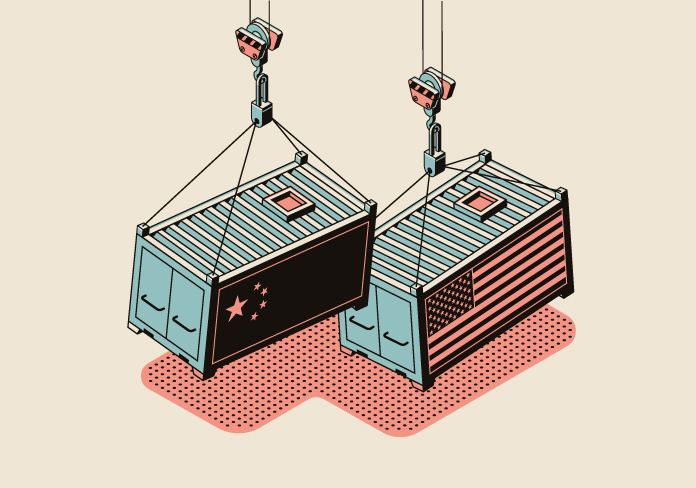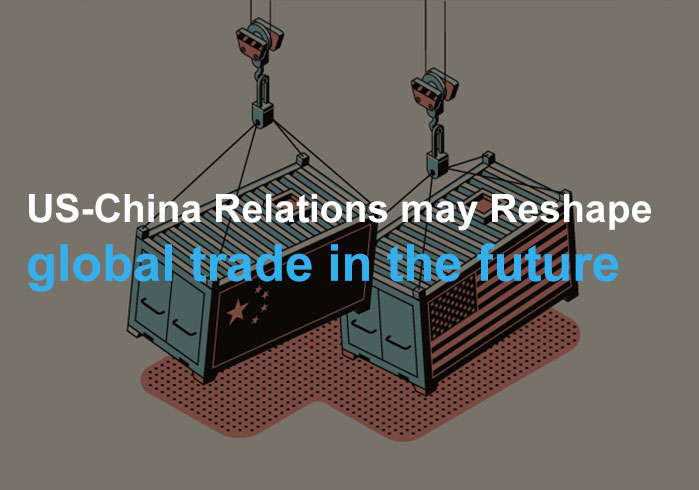
On the 11th of December 2001, China joined the World Trade Organization. This was a momentous occasion for what had previously been the beacon of communism and protectionism together with the defunct USSR (Soviet Union). At that point, container shipping was already a well-established industry with specific protocols and procedures.
The entrance of China into the leading global trading framework meant that the industrial capabilities of that country could have its full impact. The world markets would never be the same. Daniel Yergin is a Pulitzer author who specializes in energy and has been chatting about the growth of Chinese trade influence and its impact on the globe.
The widely acclaimed book titled “The New Map: Energy, Climate, and the Clash of Nations” was a watershed moment. It described how China had greatly benefitted from the convenience and speed of containerized shipping. Henceforth, China would become a major player in the globalization process.
The Origin of China’s Economic Surge
Now that China has realized some of its greatest potential, it has acquired powerful enemies. Geopolitical tensions have descended into a covert trade war and accusations that one party is responsible for the COVID-19 pandemic. The shipping industry has to contend with a world in which people travel less, may want to spend less, and are suspicious of everything foreign.
This article examines the potential changes in globalized and diversified supply chains. The buyers and sellers are increasingly separated by culture and space, if not time. The most successful businesses will be the ones that can leverage their expertise and relationships to reach far-flung destinations.
It is important to understand how and why China reached this point of near-total dominance in global trade. Experts argue that China would not be the great trading power without a revolution that started in Newark, a US port within the New Jersey area.
The key date was the 25th of April 1956 when Malcolm McLean’s Ideal X departed. This was a World War II tanker that had been dispatched to Texas. It was carrying no fewer than 58 truck trailers, excluding the wheels. The real significance of this event was that it was the first container ship that kicked off the industry.
It was a radical way of using a piece of equipment that had already known the ravages of war. The effect on the shipping industry was momentous. Suddenly cargo handling costs were falling. Everything was faster from loading to delivery.
As expected, there was resistance from dock workers who perceived this as a threat to their jobs. Eventually, these naysayers were overtaken by facts and had to accept that container shipping was here to stay for the foreseeable future. Eventually, most of the major trade lanes in the world started to make use of container shipping.
Rising U.S -China
China was the main beneficiary of this revolution and needed another major trading partner. A readymade version could be found in the USA. Mclean was the leading US line at the time and immediately launched a container service to China which took place in the 1980s.
During this time economic reform was adopted by the Deng Xiaoping administration. Now that four decades have passed, 70% of the top container ports in the world are located in China. China accounts for 40% of global container volume capacity.
Container ships are an essential ingredient in this revolution. Some have argued that these vessels have carried China to its economic miracle. When the World Trade Organization was inaugurated in 1995, China was not yet on board and it would take another five years for it to join. Despite the subsequent growth in US-China trade, recent geopolitical tensions threaten this relationship.
The last few months have seen tensions going from bad to worse, with the Donald Trump administration determined to show Americans and the rest of the world that it can control or even diminish China. For their part, the Chinese are standing strong and giving tit-for-tat sanctions in return. Whereas Deng Xiaoping used to talk about ‘One Country, Two Systems’; that has now turned into ‘One World, Two Systems’.
There is likely to be a USA-led and Chinese-led block, the two sides fiercely competing against each other. The rest of the world may be given an unpalatable choice of having to choose between these two great powers. There are already indications that some countries will be more than happy to play both sides to keep the U.S. and China interested.
Diversified Sourcing
One of the protective mechanisms that companies may consider is to diversify their supply chains so that they are not entirely dependent on either China or the USA. Container shipping data gives credence to the trends that Yergin predicted. For example, the speedy rise of China as the trading nation of first choice has tapered off.
We already know that average global container growth rates have gone down to a modest 1% for the period running from 2015 to 2020. That is a significant decrease from the high point of 9% growth between 2001 and 2005. This has caused a drastic reduction in orders from container lines.
Because demand is nowhere near as high as it once was, container lines have reduced their capacity. Predictions are not always accurate and that has caused bottlenecks at long-established ports such as Long Beach, Los Angeles, and Felixstowe. China’s dominance in the supply chain for consumer goods headed towards the USA has been diminished.
There has been a significant migration of trade away from China and towards the likes of India, Bangladesh, Indonesia, and Vietnam. Since 2005, North Asian containers (specifically from Korea, Japan, and China) as a percentage of all Asian containers arriving in the USA has fallen from 86% to 76%. Meanwhile, US trade with South Asian nations has continued to expand.
Wrapping Up
There is no doubt that collaboration and globalization are keys to future economic prosperity. However, some countries led by their vocal leaders are beginning to question the very essence of globalization. We are seeing an uptick in protectionism and outright xenophobia.
The effect is a fractured world that is primarily driven by fearful and distrustful local populism. The competition between the USA and China is an example of the resultant power struggles. Instead of working as mutually supportive partners, the USA and China are now behaving like mutual enemies that are always suspicious of each other.
Whereas globalization will continue to grow, it will become more fractured and more contentious. That may not bode well for world cooperation and peace. The shipping industry has to adjust accordingly and there are already signs that diversification is one of the preferred options.




